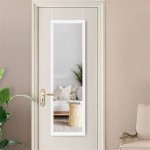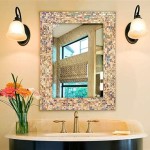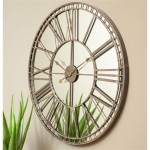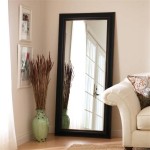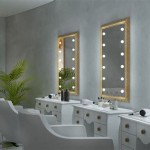Bathroom Mirror Molding Kits: A Comprehensive Guide
Bathroom mirror molding kits offer a simple and effective way to enhance the aesthetic appeal of a bathroom. These kits provide all the necessary components to frame a bathroom mirror, creating a polished and finished look. They eliminate the need for complex carpentry, making them an ideal solution for both DIY enthusiasts and professional contractors.
A typical bathroom mirror molding kit includes several key components. These generally consist of molding pieces, adhesive, and potentially finishing nails or screws depending on the specific kit. The molding itself can be made from a variety of materials, including PVC, polystyrene, and wood. Each material offers distinct advantages and disadvantages in terms of cost, durability, and ease of installation.
PVC molding is a popular choice due to its affordability and moisture resistance. Bathrooms are inherently humid environments, and PVC's resistance to moisture prevents warping and rotting, ensuring long-term durability. Polystyrene molding is another cost-effective option, known for its lightweight nature and ease of cutting. However, polystyrene is less durable than PVC and may be susceptible to damage from impacts.
Wood molding offers a more traditional and upscale appearance. Various wood species can be used, each with its own unique grain and color. Wood molding typically requires more maintenance than synthetic options, such as regular sealing to prevent water damage. It also tends to be more expensive than PVC or polystyrene.
The adhesive included in the kit plays a crucial role in securing the molding to the mirror and wall. Common adhesives include construction adhesive and liquid nails. These adhesives provide a strong bond and are designed for use in humid environments. Some kits may also include finishing nails or screws for added stability, particularly for heavier wood molding.
Before beginning the installation process, it's essential to prepare the surface area adequately. The mirror and surrounding wall should be thoroughly cleaned and dried to ensure proper adhesion. Any existing caulk or sealant around the mirror should be removed. Accurate measurements are critical for a clean, professional finish. The molding pieces should be carefully measured and cut to fit the mirror's dimensions.
The installation process typically begins with applying adhesive to the back of the molding pieces. The molding is then carefully positioned against the mirror and wall, ensuring a tight fit. If the kit includes finishing nails or screws, these are used to further secure the molding. Once the molding is in place, any excess adhesive should be removed promptly. Allowing adequate drying time, as specified by the manufacturer’s instructions, is crucial for achieving a strong bond.
After the adhesive has dried, the final step involves sealing the edges of the molding with caulk. This creates a seamless, watertight seal that prevents moisture from penetrating behind the molding. Caulking also provides a more finished and polished look. Choosing a high-quality, mildew-resistant caulk is recommended for bathroom applications.
Selecting the appropriate bathroom mirror molding kit depends on several factors. Budget, desired aesthetic, and the level of DIY experience all play a role in the decision-making process. For those on a tight budget, PVC or polystyrene kits offer affordable and straightforward installation. Those seeking a more luxurious look may prefer wood molding, despite the higher cost and increased maintenance requirements.
When choosing a kit, it's also important to consider the size and shape of the mirror. Some kits are specifically designed for rectangular mirrors, while others can be adapted to different shapes. The width and profile of the molding should also be considered to ensure it complements the overall bathroom design.
Proper maintenance of bathroom mirror molding is essential for preserving its appearance and longevity. Regular cleaning with a mild detergent and water will remove any soap scum or water spots. Avoid using abrasive cleaners, which can scratch the surface of the molding. For wood molding, periodic sealing is necessary to prevent water damage and maintain its natural beauty.
Bathroom mirror molding kits offer a valuable solution for enhancing the aesthetics of any bathroom. By carefully considering the various materials, installation processes, and maintenance requirements, homeowners can choose a kit that meets their specific needs and budget, achieving a professional-looking upgrade with minimal effort.

Mirror Molding The Easy Upgrade To Boring Bathrooms Mirrorchic

Diy Bathroom Mirror Frame With Molding The Happier Homemaker

Mirror Molding Framing A With Crown Mirrormate

Matte Black Mirror Frames Bathroom Trim Mirrormate

Diy Bathroom Mirror Frame With Molding The Happier Homemaker

Mirror Trim Ideas For Your Bathroom Mirrormate

Diy Stick On Mirror Frame Sawdust Sisters

Avery Black Mirror Frame Kit Self Adhesive Stick On My

Diy Bathroom Mirror Frame For Under 10 O Hayley Blog

Broe Mirror Framing Kits Dark Frames Mirrormate

